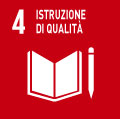- Docente: Nadia Burani
- Crediti formativi: 6
- SSD: SECS-P/01
- Lingua di insegnamento: Inglese
- Modalità didattica: Convenzionale - Lezioni in presenza
- Campus: Bologna
- Corso: Laurea Magistrale in Applied Economics and Markets (cod. 5969)
-
dal 18/09/2024 al 23/10/2024
Conoscenze e abilità da conseguire
At the end of the class, the student has a working knowledge of the basic tools and results of the classical microeconomic theory for perfectly competitive environments. In particular, the class focuses on: - Consumer choice: utility maximization, expenditure minimization and the revealed preference approach. - Choice under uncertainty and insurance decisions. - Firm choice: profit maximization and cost minimization. Finally, the student is able to apply these theoretical tools to econometric analyses.
Contenuti
ORGANIZATION OF LECTURES:
The course is organized with all lectures taught in presence. Exams are in presence too.
COURSE CONTENT:
PART I: Consumer behavior
1. Utility maximization
2. Expenditure minimization
3. Duality and comparative statics
4. Decisions under uncertainty: Expected utility theory
PART II: Firm behavior
5. Technology and production function
6. Profit maximization
7. Cost minimization
8. Cost functions, duality
Testi/Bibliografia
The main textbook is Jehle G.A. and P. Reny: "Advanced Microeconomic Theory, Prentice Hall, 2010.
Further readings:
- D.M. Kreps: "A Course in Microeconomic Theory", Prentice Hall, 1990
- A. Mas-Colell, M.D. Whinston, J.R. Green:"Microeconomic Theory", Oxford University Press, 1995 (more advanced)
- H. R. Varian: "Microeconomic Analysis", third Edition 1992, W.W. Northon & Co. Inc.
Slides and digital boards etc. can be found on Virtuale
Metodi didattici
Lectures and tutorials.
As for mathematical prerequisites, a good knowlwdge of the following topics is needed:
- linear algebra
- functions of many variables
- differential calculus
- optimization subject to constraints
Modalità di verifica e valutazione dell'apprendimento
The course grade will be determined by a final written examinamination and by problem sets assigned to groups of students during the course. The problem sets will account for 30% of the final grade, and the final exam will account for the remaining 70%.
The final exam will consist of 2/3 of analytical exercises and 1/3 of theoretical questions.
The problem sets will consist of analytical exercises only similar to the ones solved in class by the tutor of the course.
The final mark is graduated as follows:
- <18: failed
- 18: sufficient
- 19-23: satisfactory
- 24-26: good
- 27-29: very good
- 30 e lode: excellent
Strumenti a supporto della didattica
Theory will be complemented by tutorials to be added to the ordinary time schedule.
Orario di ricevimento
Consulta il sito web di Nadia Burani
SDGs




L'insegnamento contribuisce al perseguimento degli Obiettivi di Sviluppo Sostenibile dell'Agenda 2030 dell'ONU.
